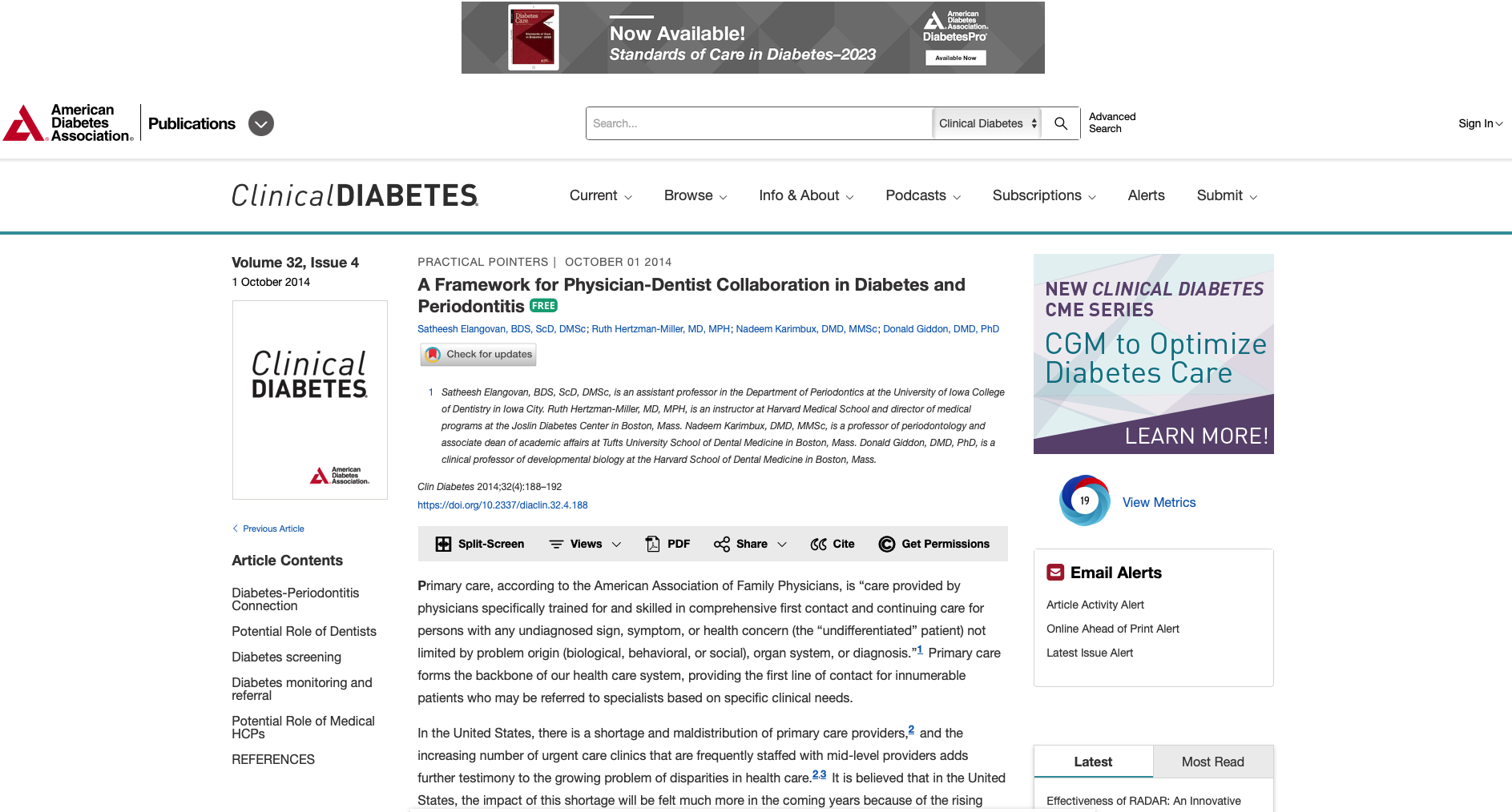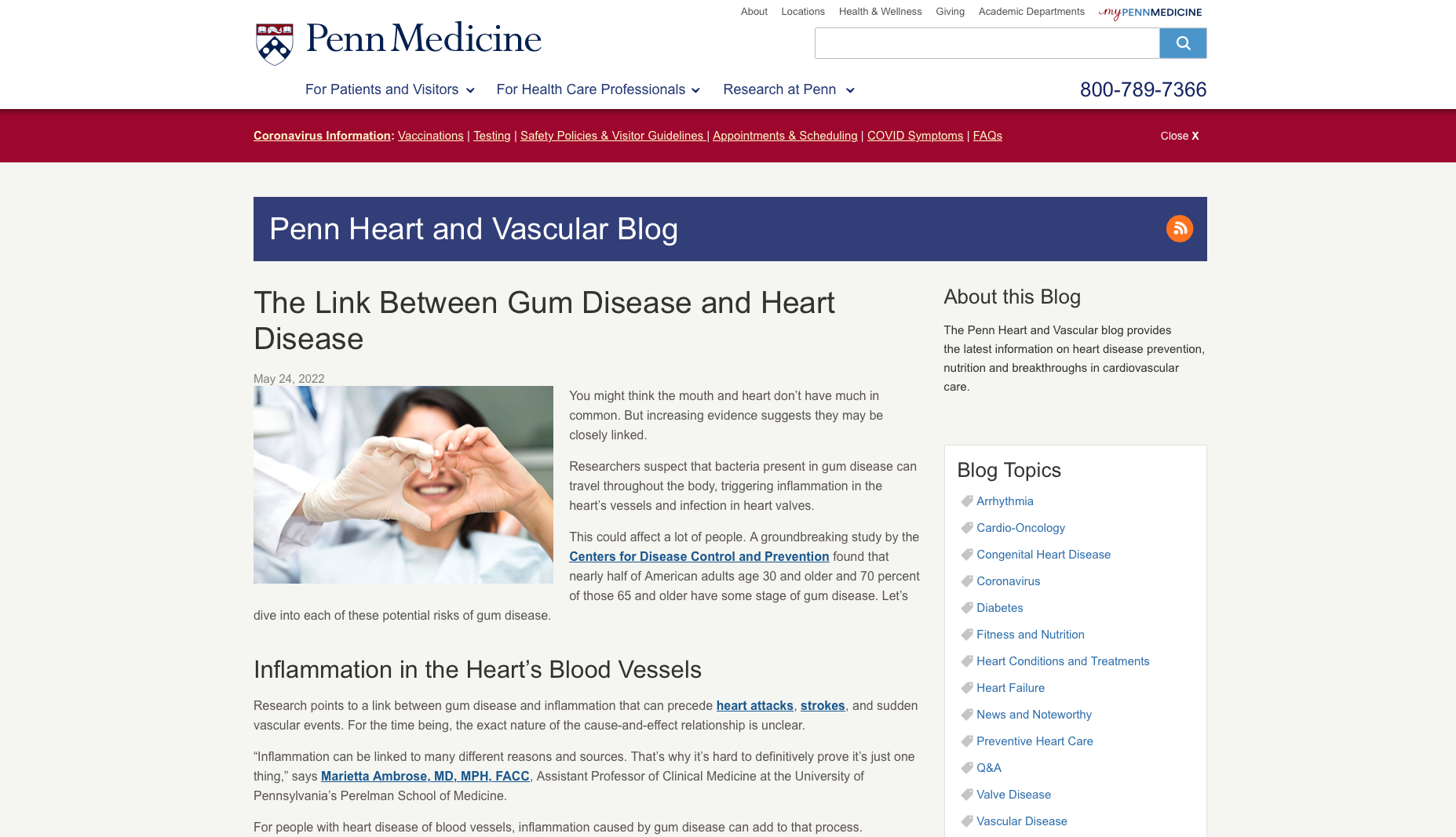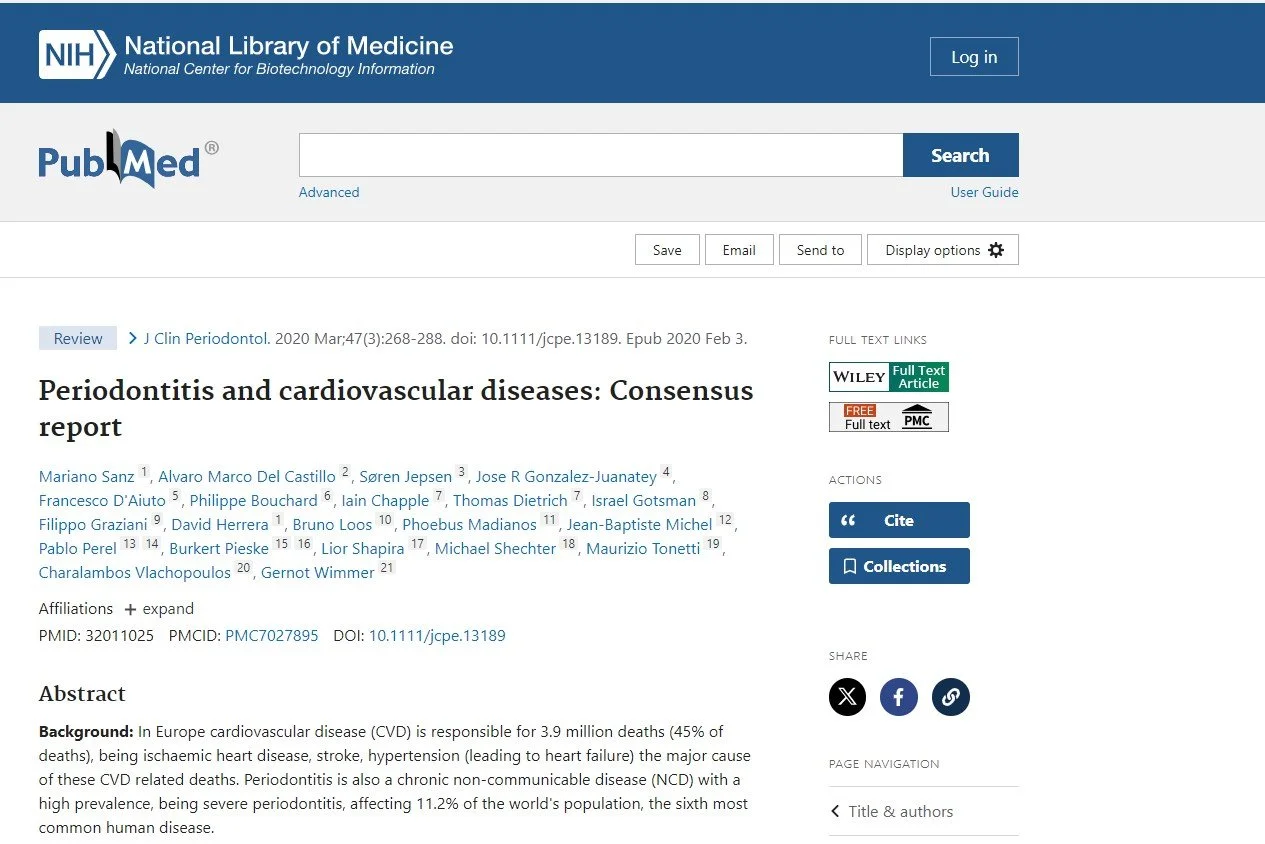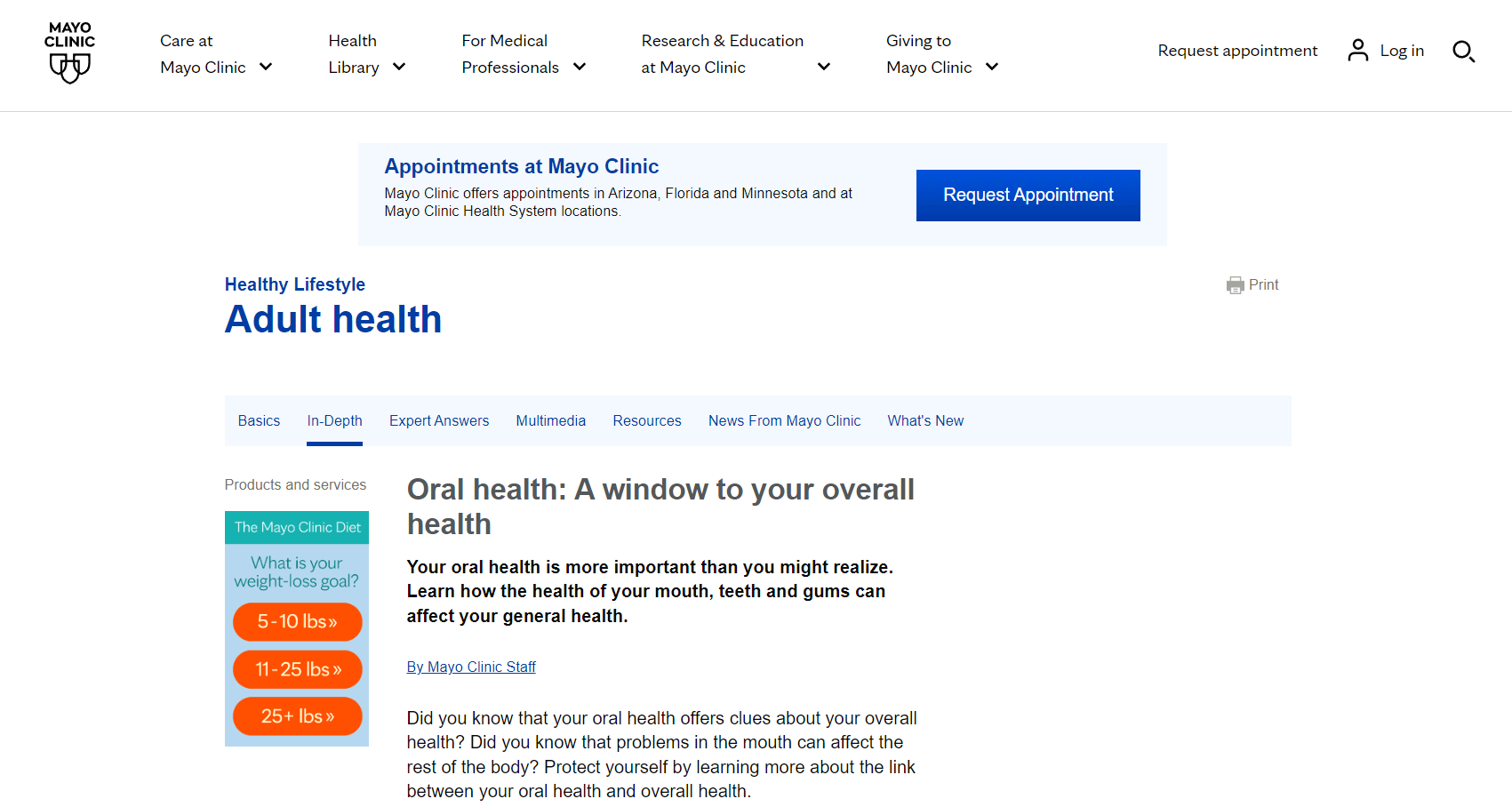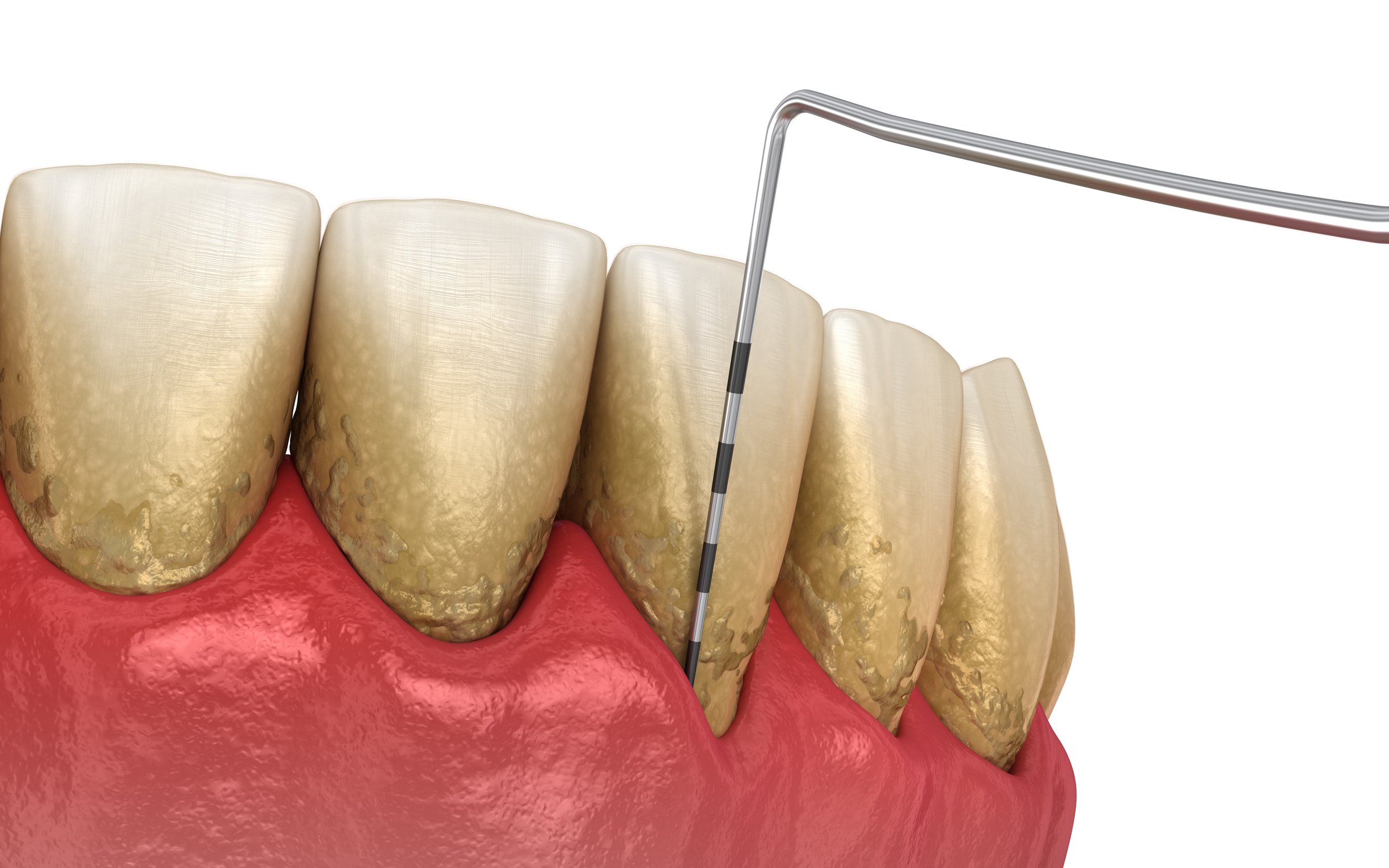
Periodontal (gum) Disease
Periodontal infection is a silent disease.
Bacteria accumulates, growths, and thrives in your gum tissue. This active infection in your gum tissue can shorten your life. The two common types of gum disease is Gingivitis and Periodontitis. Gingivitis the gum infection is concentrated on the gingival tissue without bone loss. Periodontitis the infection is also on the gingival tissue but resulting in bone loss. To understand the importance of this disease, we first must understand the vital role gum tissue plays in the overall health of your mouth, and the connection it has with your body. Gum tissue is the protective pink layer that maintains healthy and strong bone levels. Bone is the foundation of our teeth; without it, we wouldn't have teeth. When gums suffer from disease, bone gets destroyed.
Consequently, your teeth follow the same devastating course. An active infection in your gums leads to tooth mobility and, eventually, tooth loss. It's critical to understand that if you have already lost your teeth due to periodontal disease, you most likely have a large amount of bone loss, making it more difficult and less predictable for any treatment option. Although bone graft technology allows doctors to rebuild bone structure, there are limitations to regenerative/graft procedures. Keep in mind, an important sign of gum disease is bleeding gums. In most cases, gum disease does not produce pain, because the infection is drained through the gums. Furthermore, let's discuss the incredible connection between your gums and body. Gum tissue is composed of thousands of blood vessels and arteries. This incredibly complex system carries oxygen and nutrients throughout our body. But what happens when a particular tissue is infected? That infection its by products carries with it, delivering bacteria and inflammation to all vital organs. Research has shown the harmful connection of periodontal disease with major systemic conditions.
Findings include:
Cardiovascular (heart) Disease
Lung Disease
Low birth, Premature Birth Weight
Diabetes
Alzheimer's
Sadly, periodontal disease isn't curable; it is only maintained. There are several stages of periodontal disease, and depending on which stage the patient is at, there are effective treatments and technologies that help our patients. Our founder, Dr. Alexandre Ribeiro, is passionate and committed to the maintenance and education of periodontal disease.
Dr. Ribeiro explains periodontal disease and treatments available
Periodontal disease is diagnosed by the depth of the pockets surrounding the teeth. A probing procedure allows us to diagnose and check for improvements in patients undergoing treatment. Using an instrument called the probe that has millimeter (mm) measurements, we can measure the pocket's depth. The depth pocket ranges define stages of periodontal disease.
Stages of periodontal disease:
Healthy Mouth
1-3mm pocket depth
No active bleeding
No bone loss
Gingivitis
1-4mm pocket depth
Active bleeding
No bone loss
Stage 1 early periodontitis
>4mm pocket depth
Active bleeding
15% bone loss
Stage 2 moderate periodontitis
>5mm pocket depth
Active bleeding
15%-33% bone loss
Stage 3 severe periodontitis
>6mm pocket depth
Active bleeding
33% bone loss
Existing tooth loss or at risk
Stage 4 severe periodontitis
>6mm pocket depth
Active bleeding
33% bone loss
Existing tooth loss, denture risk





